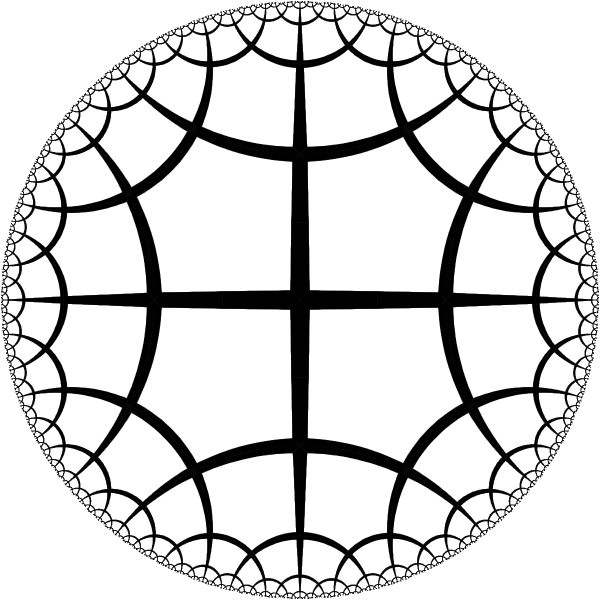Anand's problem is that given a surface (the pair of pants or the punctured torus), find the minimum intersections of all the cyclic reduced words (which are composed of a, b, A, B, where A and B are the inverses of a and b respectively)of a given length with another fixed surface word (For example, Ab or aB). He started to run Chris's program of computing minimum intersections of a single word and tried to modify it for his problem.
Jingyu's project is similar. Given the fixed surface (the pair of pants or the punctured torus), she needs to study the maximal number of minimum crossings (including the self-intersections and mutual intersections) of a multi-word (which defined as a finite collection of cyclic reduced words whose combinatorial length add up to the total length of the multi-word).
Now she is trying to come up with a computer program to solve this problem.
Rob's problem is to study the realizations as geodesics of a give configuration in hyperbolic geometry. Now he is trying to show that if the given configuration wraps around one more time of one of the legs of the pair of pants, the configuration which passes the triple point is still not realizable as before. However, no obvious contradiction can be deduced from his classic argument (considering the sum of the interior angles of the front triangle and the sum of the exterior angles of the back hexagon and derive a contradiction).
The Agenda for the main discussion:
1.Construction of surfaces of constant negate curvature.
2.Discrete fixed point free surface of hyperbolic isometries.
3.Fundamental groups and covering spaces.
First we know that a torus can be obtained by the following procedure:
.png)
Now if we unwrap the torus, we get a "helix tube". We straighten the helix tube, we obtain an infinite cylinder. Then if we unwrap this cylinder again, we get R^2, the Euclidean plane, which is the universal covering space of a torus. The fundamental domain here is the standard square which is tilings the plane R^2.
On the other hand, we can also obtain a torus by gluing a hexagon as follow:
.png)
Then if we unwrap this torus twice as before we get its covering space is:

which is also a tiling of R^2 using hexagon as you can imagine. Magically, the fundamental domain of the torus here is the hexagon.
Now to construct surfaces of constant negate curvature, we can use the idea of covering space and the Poincare model for the hyperbolic geometry.
Similarly, if we use the octagon as the fundamental domain to glue a double torus which looks like:

However, there would be a "mass of paper" at the intersections where all the loops meet as you can imagine. To clean the mass, the idea is to give this intersections a lot of negative curvature to fit in all the paper shown as follow:
.png)
This uses the Poincare model for the hyperbolic geometry as follow:

This is the universal covering space of the double torus.(This was done by Thurston when he had his oral^_^)

This picture is obtained from the first one by performing a hyperbolic isometry sending the left vertex of the large bottom a to the center of the disk.
If you have time, take a look at this cool video to help you understand!!
part 1: http://www.youtube.com/watch?v=AGLPbSMxSUM
part 2: http://www.youtube.com/watch?v=MKwAS5omW_w&NR=1
